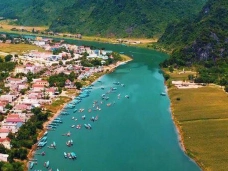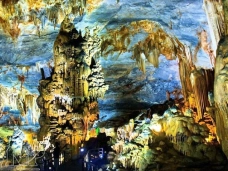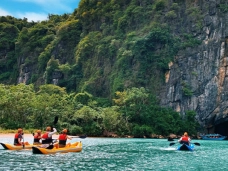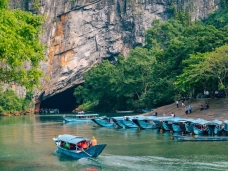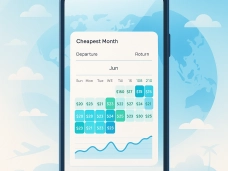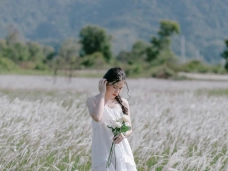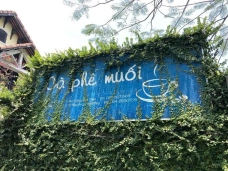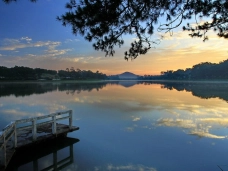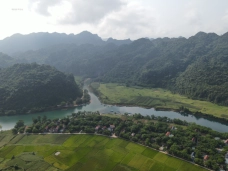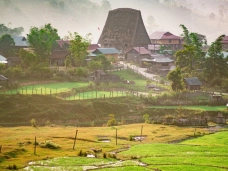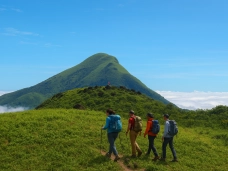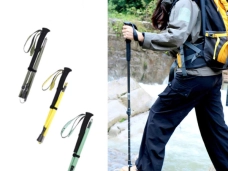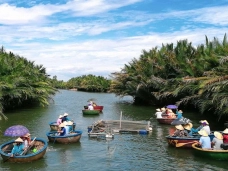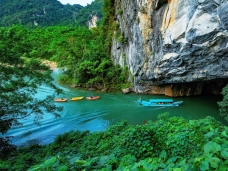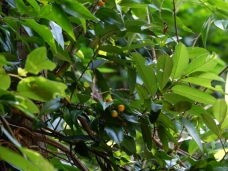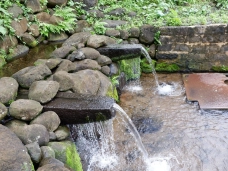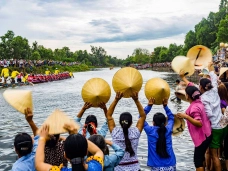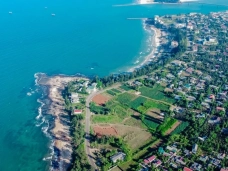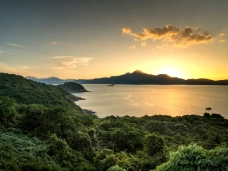Healing Waters, Healing Together: Nature’s Gift for All, Not a Privilege for Few
18-05-2025 07:00
Main contents
From Ancient Remedies to Modern Wellness Trends
In today’s fast-paced world, where people are increasingly affected by pollution, chronic stress, and lifestyle-related illnesses, the search for natural healing methods is becoming a global trend. Among these, balneotherapy – the therapeutic use of natural hot mineral springs – stands out as a time-honored remedy that promotes both physical and mental recovery.
Balneotherapy is far from a new concept. Since ancient times, Greek, Roman, and Eastern medical traditions have embraced hot springs as an integral part of healing. In modern healthcare systems, this tradition continues. Japan officially recognizes onsen therapy as a supportive treatment, partially covered by insurance. Countries like Hungary, Israel, and Russia have established medical institutions adjacent to mineral springs, where thermal therapies are clinically validated and widely prescribed.
A study by Zinovyeva et al. (2010) in Russia revealed that 68% of arthritis patients showed significant improvement in mobility after just four weeks of balneotherapy. Numerous international sources also confirm its efficacy in treating skin disorders, stress, insomnia, chronic fatigue syndrome, high blood pressure, and circulatory problems.
 Deluxe Balneotherapy Package
Deluxe Balneotherapy Package
Vietnam: Are We Forgetting Our Thermal Springs?
With its complex and diverse geology, Vietnam is home to over 400 exposed natural mineral springs (Vietnam Institute of Geology, 2014). Many of these springs boast rich mineral content, stable temperatures, and natural pressure—ideal conditions for the development of balneotherapy.
Notable Hot Spring Locations:
-
Tháp Bà (Nha Trang): A popular destination combining mud baths and hot mineral springs for skin and joint treatment, receiving over 500,000 visitors annually (Khanh Hoa Department of Tourism, 2022).
-
Quang Hanh (Quang Ninh): One of the rare saline mineral springs in Vietnam, with an investment of over VND 5,000 billion in a Japanese Onsen-style resort, meeting high therapeutic standards.
-
Kim Bôi (Hoa Binh) & Thanh Thuy (Phu Tho): Gentle thermal waters, ideal for seniors and physical rehabilitation.
-
Bang Spring (Quang Binh): A unique hot spring reaching over 100°C—hot enough to boil eggs naturally.
According to the Global Wellness Institute (2022), the global wellness tourism market generated USD 919 billion in revenue, expected to surpass USD 1,100 billion by 2025. This presents an opportunity for Vietnam not only to develop luxury resorts, but also to establish natural healing centers that integrate traditional hot springs with modern medicine.
Healing Should Not Exclude Communities
Behind the growth figures and luxury wellness resorts, however, lies a growing concern: local communities—those who live closest to these springs—are increasingly being excluded from accessing the very waters they’ve coexisted with for generations.
In areas like Thanh Thuy (Phu Tho), Bang Spring (Quang Binh), and Binh Chau (Vung Tau), many hot spring zones have been fully handed over to private operators. Entry fees often start at VND 500,000 per session—well beyond the means of many residents. A 2020 survey by the Institute of Sociology found that over 70% of local residents—especially the elderly, laborers, and low-income households—cannot afford access.
Thermal waters should not be a luxury—they should be part of preventive community healthcare.
Proposed Solutions for Equitable Access
-
Integrate into Preventive Healthcare
Local health clinics should partner with hot spring operators to provide free therapeutic sessions for vulnerable groups: seniors, patients with chronic illnesses, and people with disabilities. -
Community Subsidy Fund
Tourism operators must allocate a portion of their revenue to support regular access for local residents, following models like Beppu, Japan’s “community hot baths”. -
Public Access Zones
Governments should designate free-use areas within hot spring sites, minimize operating costs, ensure hygiene, safety, and provide proper usage guidelines. -
Legal Protection for Thermal Resources
Natural hot springs must be legally recognized as unique public resources. Full privatization should be prohibited; instead, access and management must be overseen by both local authorities and communities.
 Public Hot Springs in Japan: Free and Open to All
Public Hot Springs in Japan: Free and Open to All
Global Practices: When Access Becomes a Right, Not a Privilege
Across the world, many countries treat natural hot springs not only as medical resources but as public goods—where every citizen, regardless of income or social status, has the right to access. The following experiences offer valuable lessons for Vietnam:
Japan – Onsen for Every Class of Society
In Japan, onsen (hot spring baths) are clearly divided into two types: luxury resorts for tourists and affordable community baths for locals. In onsen towns like Beppu, Kusatsu, and Hakone, many public bathhouses offer services for just 200–400 yen (approximately 30,000–60,000 VND) per visit, with signs that clearly indicate “for local residents.” These community onsen are often subsidized by local governments and considered part of the public healthcare system. In some towns, senior citizens even receive free weekly bathing cards.
Hungary – Hospitals on the Hot Springs
Budapest, known as the "City of Spas," boasts over 120 underground mineral water sources. Several balneotherapy centers here are officially registered as public hospitals (e.g., Széchenyi Medicinal Bath) with dedicated departments, licensed physicians, and partial reimbursement through national health insurance. Locals don’t need to visit expensive resorts—they simply need a doctor’s referral to access therapeutic mineral baths at minimal cost.
France – Healing Resorts for the People
France has established over 100 medical spa centers nationwide, some of which have operated since the 19th century. Citizens suffering from joint pain, respiratory conditions, or skin disorders can receive doctor-prescribed balneotherapy for 18–21 days per year, with 65–100% of costs covered by national health insurance. This model provides balneotherapy to over 500,000 people annually, regardless of financial ability.
Iceland – Hot Springs as a Shared Natural Right
Iceland is famed for its free natural hot springs like Reykjadalur and Landmannalaugar, where locals and tourists alike bathe without charge, surrounded by pristine nature. The government maintains hygiene, signage, and safety measures without enclosing the springs in commercial facilities. Iceland’s philosophy is simple yet powerful: Nature belongs to everyone. Hot springs are a right—not a luxury.

Public Hot Spring Facilities in Japan: Free Access Zones for Women
Conclusion
Balneotherapy is more than a medical treatment.
It is a right to natural health—a right that must be protected as part of public healthcare strategy, not reserved only for those who can afford it.
Hot springs are, first and foremost, a living legacy of nature—a healing current that should not be blocked by entry gates or fenced off by luxury resorts.
As Vietnam enters a new era of wellness tourism, let us remember this:
Local communities must be the first to heal—not the first to be forgotten.
References
1. Hoàng Kiểm. (2014). Thành phần khoáng của suối nước nóng Việt Nam. Viện Địa chất Việt Nam.
2. Global Wellness Institute. (2022). Global Wellness Economy: Looking Beyond COVID.
3. Zinovyeva, G. A. et al. (2010). Effectiveness of Balneotherapy in Osteoarthritis. Russian Journal of Rehabilitation.
4. Viện Xã hội học. (2020). Khảo sát tiếp cận dịch vụ thủy trị liệu tại suối khoáng Thanh Thủy, Phú Thọ.
5. Sở Du lịch Khánh Hòa. (2022). Báo cáo phát triển du lịch trị liệu Tháp Bà – Nha Trang.
Comments
Comments (Total 1)
Lãn Niu
20-05-2025
Related Articles
13-12-2025
Giải mã tên gọi Phong Nha – Kẻ Bàng
26-11-2025
Khe Sanh – A Journey into Memory
05-11-2025
8 Unmissable Instagram Spots in Da Lat
28-10-2025
Beneath the Arch of Scarlet Blossoms
31-07-2025




